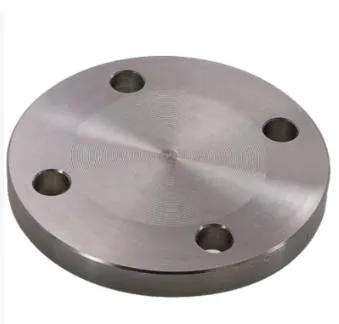-
Cangzhou Yulong Steel Co., Ltd.
-
Phone:
+86 13303177267 -
Email:
admin@ylsteelfittings.com
- English
- Arabic
- Italian
- Spanish
- Portuguese
- German
- kazakh
- Persian
- Greek
- French
- Russian
- Polish
- Thai
- Indonesian
- Vietnamese
- Zulu
- Korean
- Uzbek
- Hindi
- Serbian
- Malay
- Ukrainian
- Gujarati
- Haitian Creole
- hausa
- hawaiian
- Hebrew
- Miao
- Hungarian
- Icelandic
- igbo
- irish
- Japanese
- Javanese
- Kannada
- Khmer
- Rwandese
- Afrikaans
- Albanian
- Amharic
- Armenian
- Azerbaijani
- Basque
- Belarusian
- Bengali
- Bosnian
- Bulgarian
- Catalan
- Cebuano
- China
- China (Taiwan)
- Corsican
- Croatian
- Czech
- Danish
- Esperanto
- Estonian
- Finnish
- Frisian
- Galician
- Georgian
- Kurdish
- Kyrgyz
- Lao
- Latin
- Latvian
- Lithuanian
- Luxembourgish
- Macedonian
- Malgashi
- Malayalam
- Maltese
- Maori
- Marathi
- Mongolian
- Myanmar
- Nepali
- Norwegian
- Norwegian
- Occitan
- Pashto
- Dutch
- Punjabi
- Romanian
- Samoan
- Scottish Gaelic
- Sesotho
- Shona
- Sindhi
- Sinhala
- Slovak
- Slovenian
- Somali
- Sundanese
- Swahili
- Swedish
- Tagalog
- Tajik
- Tamil
- Tatar
- Telugu
- Turkish
- Turkmen
- Urdu
- Uighur
- Welsh
- Bantu
- Yiddish
- Yoruba

Dec . 02, 2024 02:32 Back to list
bending steel pipe without a bender
Bending steel pipes is a common task in various construction and manufacturing projects, and while hydraulic benders or pipe benders are often used, there's a way to accomplish this without such specialized equipment. This article will explore alternative techniques for bending steel pipes without a bender, providing insights and methods that can be executed with basic tools and materials.
Understanding Steel Pipe Bending
Steel pipes are essential components in plumbing, electrical conduit, and structural applications. Bending steel pipes can be necessary to fit specific designs or layouts. The challenge lies in achieving a precise bend without compromising the integrity of the pipe. Bending too sharply can lead to kinks or material failure, so it's imperative to understand the limitations of the pipe's material and diameter.
Techniques for Bending Without a Bender
1. Using Heat One of the most effective methods for bending steel pipes without a bender is to apply heat. By heating the area to be bent, the steel becomes more malleable. Here's how to do it - Tools Needed A propane torch or a heat gun, fire-resistant gloves, and safety goggles. - Process Secure the pipe in a vice, ensuring it’s stable. Heat the section of the pipe where you want to create the bend until it glows a dull red. Carefully begin bending the pipe by applying steady pressure in the desired direction. It's crucial to heat only the section to be bent and to monitor the heating to avoid burning through the material.
2. The Sand Method Another method to prevent kinks while bending is to fill the pipe with sand. This technique is especially useful for tighter bends. - Tools Needed Fine sand, a funnel, and end caps or duct tape. - Process Pack cooked sand tightly inside the pipe, ensuring that there are no air pockets. Seal both ends of the pipe using end caps or duct tape to keep the sand from spilling. Once packed, you can apply manual or mechanical force to bend the pipe. The sand within will support the pipe's structure, preventing collapse.
bending steel pipe without a bender

3. A Simple Lever If you need a slight bend, a lever can be effective. - Tools Needed A long piece of wood or metal pole. - Process Place the pipe on a sturdy surface with the section to be bent extending off the edge. Use the lever by positioning one end beneath the pipe and applying pressure on the other end. The amount of pressure will determine the bend's angle; adjust according to your needs.
4. Using a Template For precise bends, you can create a template. - Tools Needed A piece of plywood or similar sturdy material. - Process Draw the desired bend on the template and place the pipe alongside it. Mark where the pipe needs to bend, and use your heat or sand methods to achieve the desired angle following the template.
Safety Considerations
When bending steel pipes, always prioritize safety. Wear protective gear, including gloves and safety goggles, to shield yourself from flying debris and hot surfaces. Ensure your workspace is clean and clutter-free to minimize the risk of accidents.
Conclusion
Bending steel pipes without a bender is entirely feasible with the right techniques and tools. Whether using heat, sand, levers, or templates, these methods allow for flexibility and creativity in your projects. Although a professional pipe bender is useful for large-scale operations or precise work, DIY methods can empower individuals to tackle smaller tasks effectively. As you explore these techniques, you'll find that bending steel pipes can be both an accessible and rewarding skill.
Latest news
-
ANSI 150P SS304 SO FLANGE
NewsFeb.14,2025
-
ASTM A333GR6 STEEL PIPE
NewsJan.20,2025
-
ANSI B16.5 WELDING NECK FLANGE
NewsJan.15,2026
-
ANSI B16.5 SLIP-ON FLANGE
NewsApr.19,2024
-
SABS 1123 FLANGE
NewsJan.15,2025
-
DIN86044 PLATE FLANGE
NewsApr.19,2024
-
DIN2527 BLIND FLANGE
NewsApr.12,2024
-
JIS B2311 Butt-Welding Fittings LR/SR 45°/90° /180°Seamless/Weld
NewsApr.23,2024











